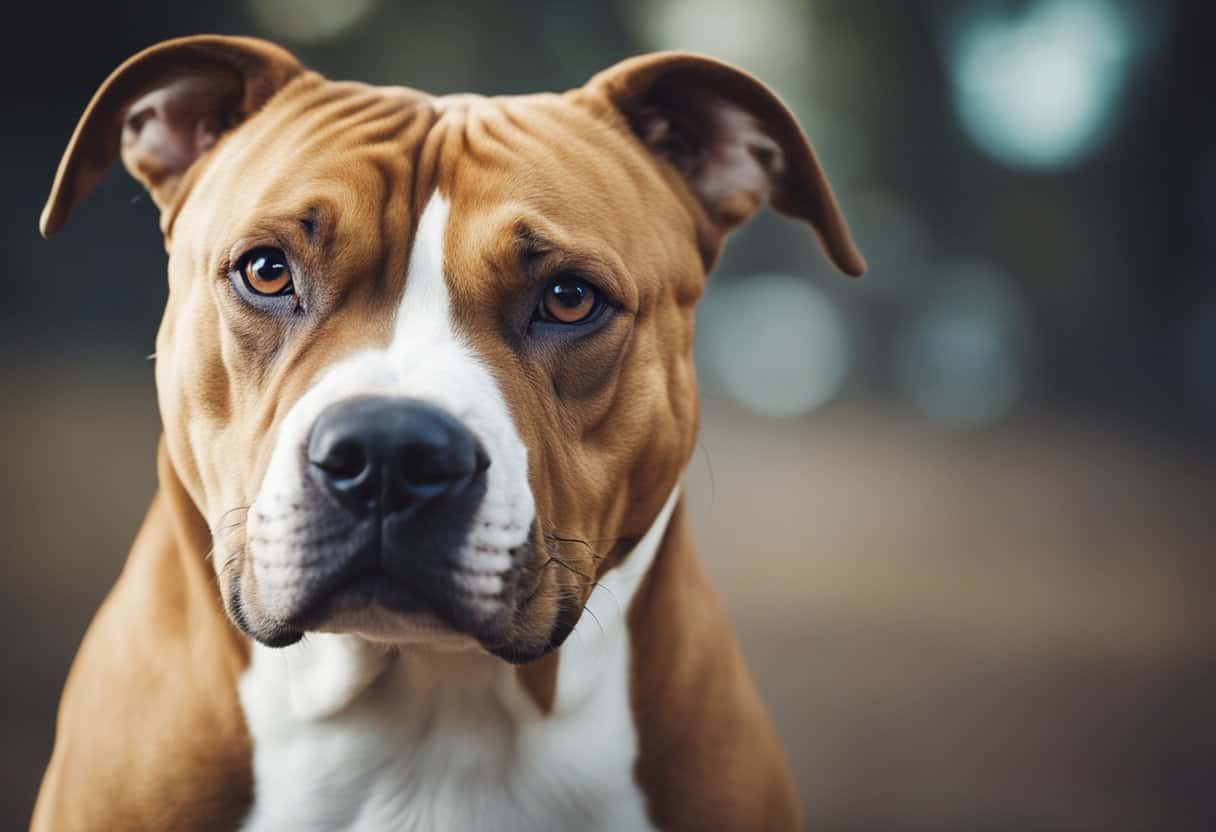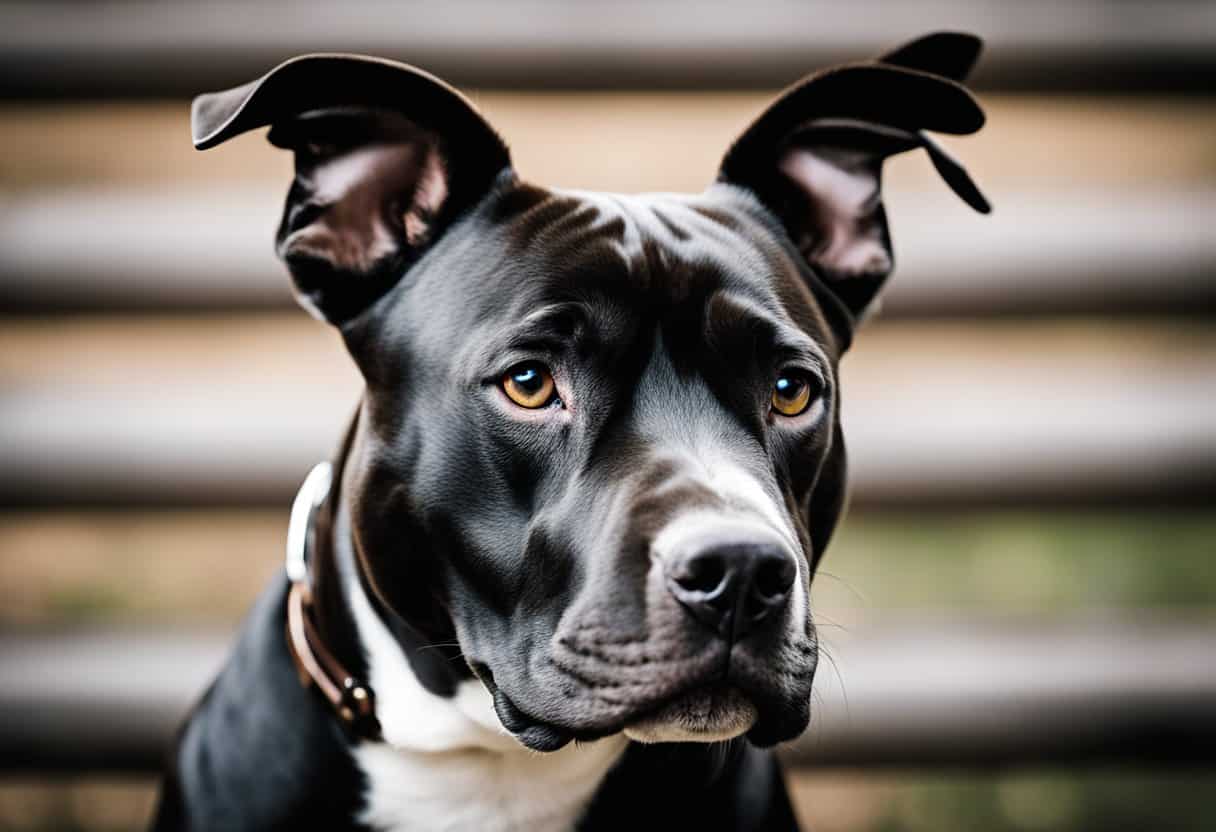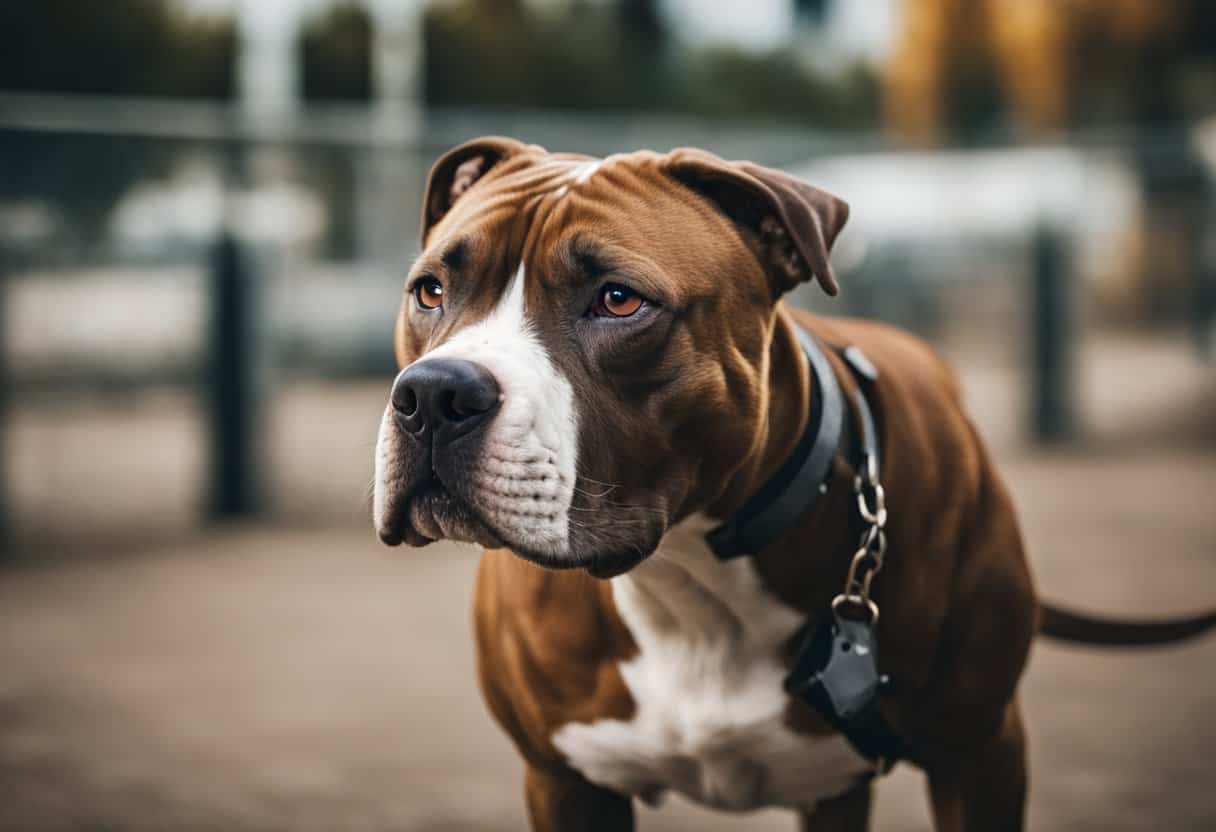Pitbulls are a unique breed, known for their strength, loyalty, and distinctive physical features. Among these features is their notably large head, which tends to draw attention and curiosity. Understanding the reasons behind this characteristic can provide valuable insight into the breed’s history and purpose.
However, it is important to remember that not all Pitbulls have extremely large heads, as variations can be found within the breed. The size of a Pitbull’s head will ultimately depend on factors such as genetics and lineage. As a responsible pet owner, you need to appreciate and understand the unique characteristics of this loving and loyal breed.
Why Do Pitbulls Have Big Heads?
Pitbulls are known for their characteristic big heads, which can be attributed to selective breeding. Breeders have intentionally focused on developing Pitbull pups with certain desired qualities, such as big heads. This was achieved through breeding processes that selectively paired dogs with desirable traits, enhancing these features in their offspring.
Selective breeding has been used for thousands of years, and humans have applied this technique to both plants and animals. With dog breeds, the intent is to create new breeds that exhibit specific desired traits. In the case of Pitbulls, the big, boxy head is considered an attractive feature, fitting into their official breed standard. As a result, this physical characteristic has been emphasized through generations of breeding.

The large head of a Pitbull also has functional benefits when it comes to the anatomy and strength of their jaw muscles. The wide, square-shaped head accommodates sizable jaw muscles, which contribute to the dog’s powerful bite. These strong jaw muscles are essential for Pitbulls, as historically, they were bred for tasks that required a strong grip and bite force.
In summary, the big heads of Pitbulls are a result of both selective breeding for aesthetic reasons and the functional benefits associated with the dog’s jaw muscles.

Get the 7 Biggest Training Mistakes free report!
Do All Pitbulls Have Big Heads?
Not all Pitbulls have big heads, although this feature is a common characteristic among many individuals of this breed. Pitbulls’ head sizes and shapes can vary due to genetic diversity and breeding history. It is important to remember that within the Pitbull breed, there is a range of physical appearances.
One reason for the prevalence of big heads in Pitbulls is selective breeding. Over time, humans have bred Pitbulls to possess certain desired traits, such as larger heads. This practice has led to the development and evolution of Pitbulls that often have blocky, oversized heads, contributing to their strength and powerful jaw muscles.

The anatomy of Pitbulls’ jaw muscles also plays a role in their head size. Their jaws are connected to the crown of their skull, and having a larger head can help accommodate the muscles required for gripping and biting. This allows Pitbulls to have remarkable biting capabilities and impressive strength, which is a notable feature of the breed.
In summary, while not all Pitbulls have big heads, it is a prevalent trait due to a combination of selective breeding and their jaw muscle anatomy. But keep in mind that individual Pitbulls can vary in head size and appearance, as well as other physical traits, since each dog is unique. Always remember to treat and respect these dogs as individuals and not solely based on physical features or stereotypes.
Can Big Heads Bring Health Problems To Pitbulls?
As the owner of a Pitbull, you might wonder if their big head can bring health problems to your dog. While the large head is primarily a result of selective breeding and inherent anatomy, particularly due to the powerful jaw muscles attached to the skull, some health concerns can arise. Let’s briefly discuss a few of these potential health issues.
Firstly, you should be aware of Brachycephalic Airway Syndrome, which is a condition that affects dogs with short noses and wide skulls. Although Pitbulls are not as severely brachycephalic as breeds like Pugs or Bulldogs, their relatively shorter snouts can still put them at risk of developing breathing difficulties. Watch for signs of labored breathing or excessive snoring.

Another concern related to your Pitbull’s big head is the possibility of skin allergies. These muscular dogs are prone to skin infections, which can be caused by flea or food allergies, contact allergies, or atopic dermatitis. Symptoms of skin infections include itching, scratching, and redness of the skin around the head or other areas of the body.
Finally, while Pitbulls have a strong skeletal formation, their big heads do not make them immune to common conditions impacting other breeds. Hip dysplasia, a genetic condition causing an abnormal fit between the hip socket and the head of the femur bone, can lead to pain, arthritis, and mobility issues. Visiting your veterinarian frequently can help identify any early symptoms and prevent further complications.
Final Thoughts
In conclusion, the primary factor contributing to the size of a Pitbull’s head is selective breeding. Over generations, Pitbulls were bred to develop certain traits, including a powerful jaw structure required for their original purpose in dog fighting. The large head accommodates the strong jaw muscles, resulting in a greater bite force. This breeding practice, though now largely dismissed as cruel and inhumane, has left a lasting impact on the breed’s overall appearance.
While the big head of a Pitbull certainly adds to their unique and attractive appearance, it can be a factor to certain health issues as well. By staying vigilant and regularly consulting with your veterinarian, you can ensure that your Pitbull remains happy and healthy.
